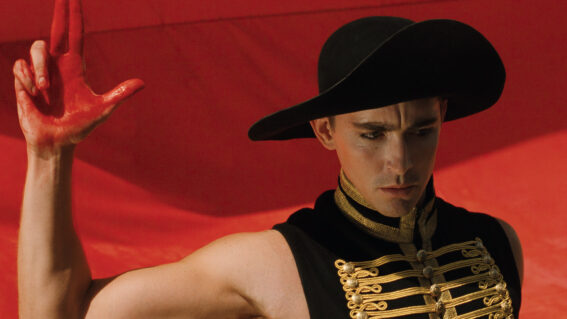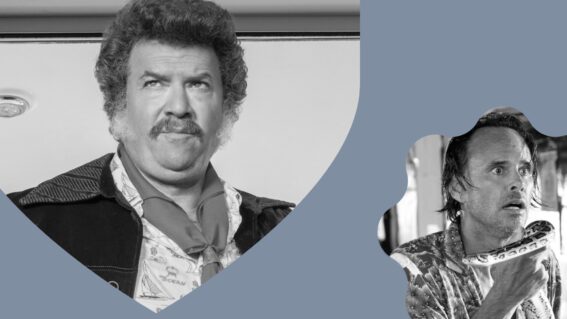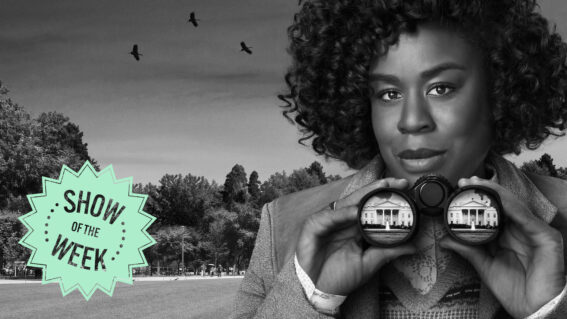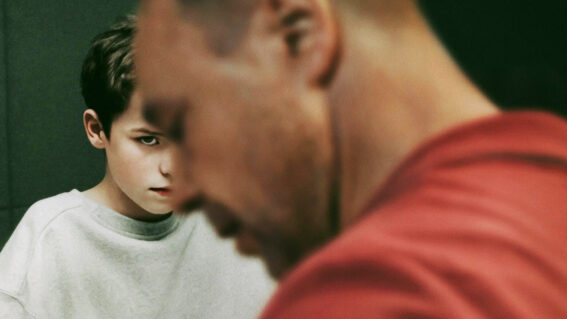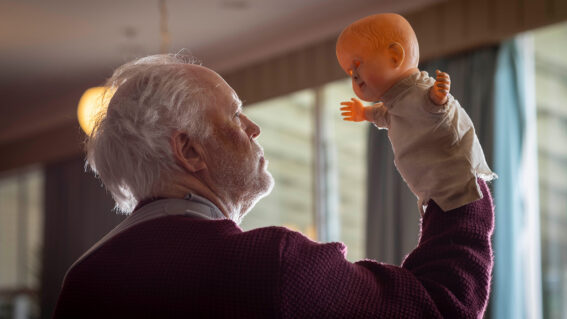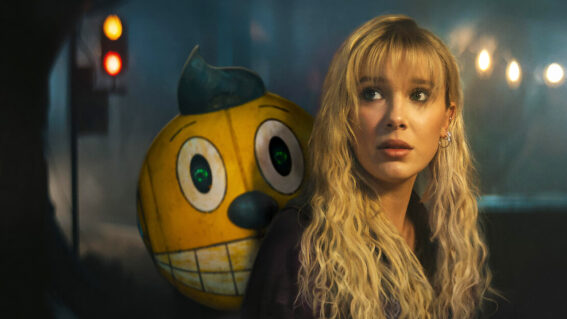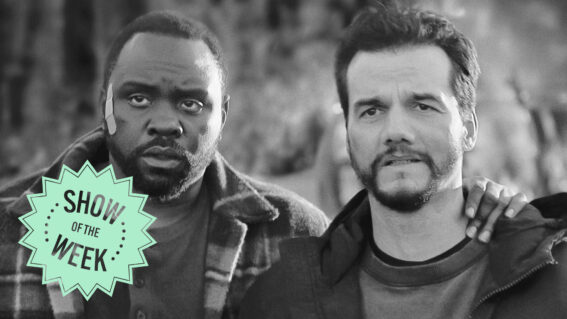Interview: Talking 3D and Higher Frame Rate with RealD’s Michael Lewis
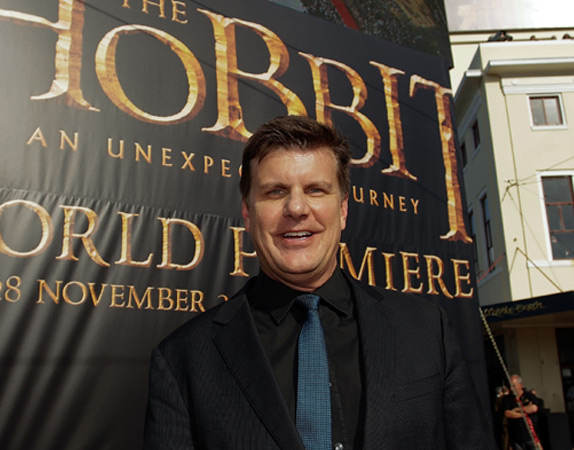
RealD is the company that pioneered digital 3D in cinemas, and the company’s technology is now seen on 22,000 screens around the world. Chairman/CEO and co-founder Michael V. Lewis was in Wellington recently for the world premiere of The Hobbit: An Unexpected Journey and Flicks sat down with him for a chat about the higher frame rate and 3D unveiled in Peter Jackson’s new Tolkien trilogy.
FLICKS: I thought a good starting point would be to get a bit of background about what your company’s done to date.
MICHAEL LEWIS: How I got into this was that I was fascinated by 3D in the 90s. I produced a couple of 3D IMAX films and I just felt that there was a tremendous opportunity to make the image more real and life-like. 3D was always a way to do that. So, we started to look at where 3D had been used successfully. What we discovered was that it was being used by NASA, the military and Fortune 500 companies for designing aircraft and automobiles – where you have to see the way we see in real life. You have to see in 3D and so we ended up acquiring a company that had been in that business for 30 years. We then spent about two to three years working with digital projection systems in their very, very earliest days which was starting in 2003.
After a couple of years we finally saw an image on the screen that we thought was really, really good. Dick Cook who was running Disney at the time, came over and brought about 30 executives and we showed him some very early 3D images from Real3D and he challenged us and said, Well, can you get a 100 screens up, we have a film coming out in November of ‘05 called Chicken Little and we’d like to do a special version that will play on Real3D and that’s how it all started, that’s how the new 3D got going. And since that time we’ve had about 100 films that have shown on Real3D platforms. What we are is a licensing company, we license the technology to theatres. And so the consumer, when they go the box office, they have a choice of seeing it in 2D. We hope they will see it in Real3D, and our goal is just to make the image better, make the image more real and life-like and that’s really what 3D is about, the new 3D.

We have had about 100 films, we have 22,000 screens now that are across the globe. We’re in 70 countries. Most of the major new tent pole motion pictures are being shown in Real3D. In the case of Peter Jackson and The Hobbit, we got very excited when we heard that he was considering it. We had supplied his company with 3D systems to visualize on the set. I would love to be able to say that Real3D and I can take personal credit for The Hobbit but I don’t think that’s fair. I talked to Peter and I said “you know, there are some filmmakers and some in the industry that say 3D is still too challenging and it’s not worth the effort” and he said “I really just don’t understand what all the fuss is about, I just shot it and it was a great experience and frankly I wish I could have done Lord of the Rings in 3D as well”.
FLICKS: Without knowing the technical limitations that it imposes on as a director, 3D just seems like another tool to be used in a number of ways by different people.
LEWIS: Yes, it’s another tool in the toolbox and the director is trying to get you as an audience to suspend disbelief, to make it more like real life to engage you and, probably more importantly, to get you out of your house and getting into your car and hiring a babysitter. And so that cinema experience has to be incredible. It has to be “wow”, that’s what we focused on. For directors like Peter I think it’s a new sandbox; it’s a cinematic language and that’s what excites them about it. It’s like the early days of the film business in the twenties when people were learning how to cut and pan and how do you tell a story and, how do you use colour, how do you use the sound. This is just another tool.
Every time you go to a movie, it should be, it should be, “wow, what am I going to see next?”
I think with all of these other options that we have to entertain ourselves, cinema must be something really, really special and in order for it to be relevant in the 21st Century we have to continue to evolve, not only the creative language of cinema but also technologically. We have to make that technology better and better. Every time you go to a movie, it should be, it should be, “wow, what am I going to see next?” Well, on The Hobbit, its going to be high frame rate. In select markets, that’s going to be the new, new thing that no one has ever seen before.
FLICKS: Do you anticipate that higher frame rate is going to be something that rolls out the same way the 3D did – that it’s going to be something else that you can’t replicate in another environment and will establish itself in the same way?
LEWIS: I hope so, because James Cameron is planning on doing Avatar 2 – and 3 of course – at higher frame rate. I hope this is something that as an industry trend will be very good for the audience, it will be very good for 3D. It’s just another evolution and I would expect over the next 3 to 5 years it will become more common place.

James Cameron on the red carpet at An Unexpected Journey's world premiere
FLICKS: It’s a little bit strange to see at first, so will audiences have to completely adjust to the idea that The Hobbit is what everything is going to look like at high frame rate? Do you think we’ll see new filmmaking techniques employed with the higher frame rate?
LEWIS: Well I think with each new technology the visual aesthetic changes and this looks different than traditional film. The same thing happened when colour came into the process, the first colour films when you watch them are quite different from the colour films that we see today – that particular technology has evolved.
FLICKS: They’re lit differently and so on.
LEWIS: Exactly, and I think you’re going to see the same thing with high frame rate. Three to five years from now it will be different, it will be a different version. High definition on television has changed a lot. You know when that first came out, people complained it was too real, people complained about how fake the sets looked on the 6 o’clock news. But technology and the people using it evolve and then we don’t give it any thought any more. I think the same thing will be true with this. But this is really important because this lays a foundation for 3D to evolve even beyond where it is today.
FLICKS: With The Hobbit in mind, where there specific sequences you thought were really enhanced by the high frame rate?
LEWIS: Well, it was interesting – with the 3D films that I did when we got the audience cards back I expected them to be talking about scenes where there was a lot of action, things going on, 3D elements coming out towards you. I figured those would be the ones that would be the most memorable. In fact, it was scenes where not a lot was going on, where people felt like they were inside in the film.
What 3D does really well is it magnifies emotion and it takes you to a place that you can’t normally go.
And so I think anything where you have big environments where you feel like you’re there that’s sort of one benefit. And then in very small intimate environments – say if you are in a room or a small setting with one or more people – that kind of sort of puts you into that space as well and you sort of forget that this is a movie. You feel like it’s just like you and I are sitting here and talking, it’s the same sort of experience. So, I think those two things in particular are really key. What 3D does really well is it magnifies emotion and it takes you to a place that you can’t normally go.
FLICKS: It’s interesting you spotlight those two elements of The Hobbit. The intimate parts of it feel to me like it’s got an increased kind of theatricality, the performance becomes more central and I can say that there is a potential for that to become more of a significant aspect of filmmaking. But I think that it was very apparent that you were right there with the performance. And the danger is that you could be distracted watching a performance more so than watching a character. But with the busier scenes, action sequences or massive environments, there really is that sense of looking into a world being brought to life.
LEWIS: I think that’s what’s interesting and dynamic now about film-making is that depending on the director and how they are using the tool you get a very different result. There are some directors specifically on 3D that would like to sort of create the scene as if looking through a window, other directors like to have a more coming out towards you and those are just different approaches. There are certain directors who shoot a certain way and I think it’s going to broaden that ability to have more of a visual signature with these technologies.
FLICKS: So I guess you’re kind of poised, as you mentioned before, to see higher frame rate kind of explode with The Hobbit and this is the really the big film for the technology. Do you have a plan as to how this is going to go from here? You mentioned James Cameron is going to shoot in the format. Are other people lining up or is it everyone just kind of holding off over the next couple of weeks to see how this plays out?
LEWIS: Yeah I think like everything else I think it is probably a little bit of both. I think the pioneers will continue to pioneer and take the leading steps, Peter is pioneering. He is taking chances and that’s what we have to do. We have to take technological chances, creative chances, take risks to create something unique that people want to go and see in the theatre. We have had a number of those sort of milestones: Chicken Little we’ve had, we’ve had Avatar obviously legitimise the medium and say “okay, 3D’s here to stay and look at the opportunity”. That film brought in a lot of other top film makers, you had Martin Scorsese came in with Hugo, you had Ridley Scott, Steven Spielberg. I think The Hobbit is sort of another key milestone because trying out the 48 frames per second, see how audience respond to it.
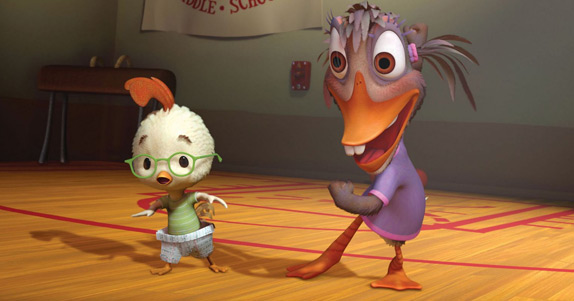
Chicken Little
It will certainly improve the 3D environment and the 3D experience and you’re also seeing a broadening of the types of genres. When we first started we were an animated platform then we went to genre films, then big live action films like Avatar. The Hobbit is a fantasy film so it is slightly different but we’re seeing dramatic films like Life of Pi, we are seeing Baz Luhrmann’s The Great Gatsby. That’s becoming a pretty broad range. I mean, a couple of years ago people would say “3D is fine but it’s really good for animated films only”. I go, “I don’t think so, audiences like colour, I think every film benefits from it”. It just makes the experience more real. And they’re going, “come on no one is going to do a drama in 3D”. Well, here we are, Great Gatsby. Here we are, Life of Pi, Hobbit.
FLICKS: Is it going to be totally out of the out of the reaches of everyone but the top line filmmaker for the short to medium term? There must be a ton of expenses associated with it – even just from an editing point of view with the increased amount of processing power you’re going to need.
LEWIS: Like all technology, capability improves and costs go down and that’s what’s happening in 3D. It’s getting easier and easier to use the technology. I think we’re sort of in that early stage, very similar to what happened when people realized that they were sitting on the tools to make films and before you know we were populating the universe with YouTube and short films because people had a mobile phone and they could edit it and do all those things that not too many years ago cost millions of dollars, right? To not only make the film but get it distributed and, and I believe 3D is going to be much the same.

